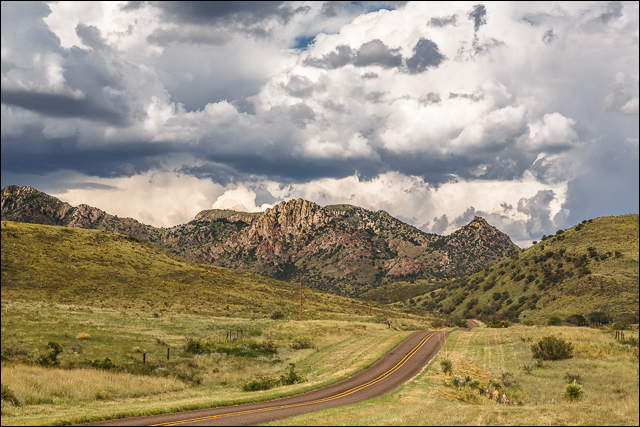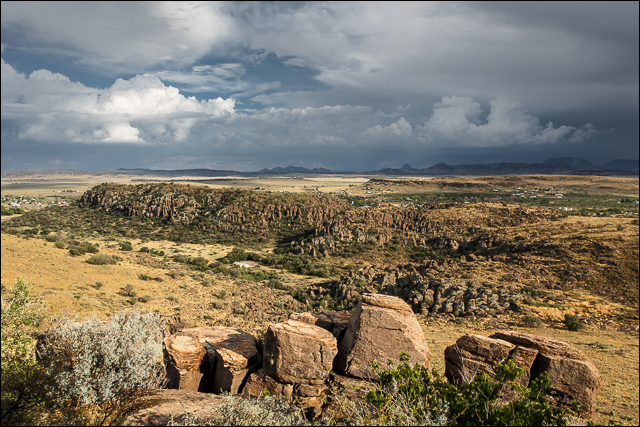I thought I’d repost this article from early 2010 since the economy and market hasn’t really changed all that much (sad but true). – Enjoy!

Fort Davis, Texas
Copyright © 2013 Jeff Lynch Photography
Click on the image above for a larger version.
Shot taken with a Canon EOS 5D Mark III with GP-E2 unit attached, set on aperture (Av) priority using an EF 24-105mm f/4L IS USM lens tripod mounted. The exposure was taken at 24mm, f/16 for 1/6th of a second at ISO 100 using Singh-Ray’s warming polarizer filter. Post capture processing was done in Adobe Photoshop Lightroom 5.
GPS Coordinates: 30°35’56” N 103°54’24” W, 5342 ft
Many aspiring photographers and devoted camera buffs ask me the same question year after year, “How do you make a photographic hobby pay?”.
At first I’m tempted to tell folks that it’s impossible because gear lust tends to overcome common sense in most amateurs (and many professionals). The manufacturers keep adding features to keep us dishing out money for new cameras every year. If we fall into this trap (we’re all guilty of this folks) then it’s impossible for amateurs or most professionals to break even, let alone make a profit.
Successful professionals understand this reality very well and look at their gear as capital equipment that depreciates over time. No small business replaces capital equipment before it’s fully depreciated and the key to making money as a small business is watching your cash flow like a hawk.
However, somewhere along the way, serious amateurs begin to realize that their 10 megapixel 20D or 12 megapixel D300 is really all they need to achieve consistent image quality. They come to the realization that a good photograph has a lot more to do with the photographer than with the camera. It’s a profound and humbling realization for most and it’s the time when they sets aside their gear lust and begin their search for knowledge. It’s the time when serious amateurs seek out teaching professionals at workshops, seminars and photo-tours.
It’s also the time when many begin to give back to the photographic community as a whole. This is where many folks really begin to grow as photographers and discover that sharing knowledge freely with others multiplies their opportunities to connect with potential customers, sponsors and other photographers that share their passion.
The next steps amateurs take to make their craft pay for itself depend greatly on the personality of the photographer.
Selling fine art prints or coffee table books to the general public is hard work and most amateurs know very little about their regional market for such images.
Microstock photography is one possible revenue stream but a quick search on sites like iStockphoto turn up thousands of incredible images from very talented amateurs and professionals. (Face it. The stock photography market today is already flush with talent.)
Getting commercial work as an amateur is extremely difficult, given the fact that so many top-notch professionals are already out of work due to the ailing economy and the rapid decline of print media. Competing in the commercial arena means going up against the likes of David Tejada, Tyler Stableford and Kirk Tuck. Not for the weak of heart.
Some how do you make your photographic hobby pay for itself?
- Control your gear lust and stop spending money for the latest & greatest stuff! The easiest way to break even is to stop spending your hard-earned money on a new camera every year.
- Volunteer at your church, your local food-bank or your local civic center. NGO’s (Non-Governmental Organizations) in your local area may well need the services of a photographer to document their work. But please don’t under-bid your local pro who needs all the work he can get.
- Sell to small, local companies that won’t usually hire a professional photographer to shoot their widgets, facilities or staff but want new images for their web site every so often. (Just don’t do this in Sugar Land ;-))
- Sell your services to local folks that need a simple but professional head shot for a blog, Twitter or Facebook. You don’t need a studio. Make house calls using your minimalist “studio in a box” on-location lighting kit.
If you’re good and can find a local niche for your work, your photographic hobby has the potential to pay for itself. Even if it doesn’t, you’ll have gained valuable experience that most hobbyists never dream of.
Our Lord and Saviour said it best in the New Testament, “Give, and it will be given to you.” (Luke 6:38)










